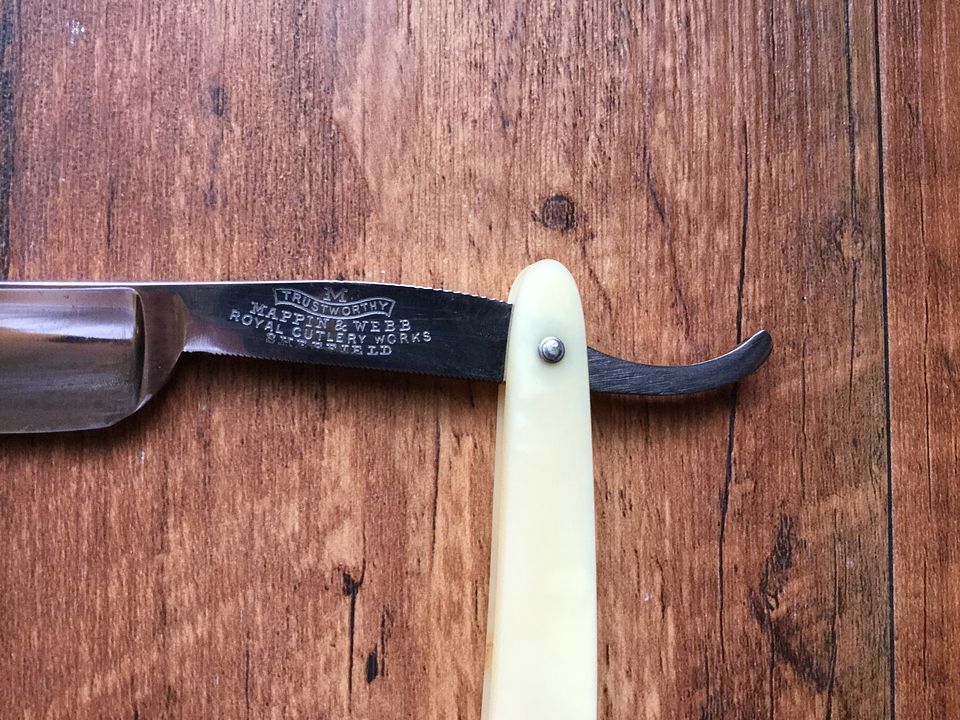Richard338
Gold Member
- Joined
- May 3, 2005
- Messages
- 7,234
I'm a hobbyist knife maker and decided to make some straight razors for myself as well as my son and nephews.
I read up a bit about suitable steels and how to do the grind.
I made a batch of 5 using W2 steel. They are hollow ground using a 2.5" wheel.
I was hoping for a hamon, and sent them out for heat treat after rough grinding.
They came back at HRC 64-65, but the transition line is way up along the handle and spine, so no interesting hamon along the bevel.
I managed to finish the grinds without ruining any and got the edges to an even 0.005" which should be a good place prior to initial sharpening.
I lightly etched them all since this photo and they are a nice grey patina color.
I'm working on making and pinning a variety of handle materials.
My question is about the best sharpening and honing procedure.
I have a DMT and a WE for knives, but I know these won't work for a razor.
When I lay them (edge and spine) on my DMT the edge makes solid even contact so I think I'm ready to go.
I read some threads here and found some discussion of an article on straight razor honing: https://scienceofsharp.com/2016/04/14/simple-straight-razor-honing/comment-page-1/
From there I made a shopping list, but I would like any feedback before I pull the trigger on a set of fairly expensive stones and strops.
The list is:
Shapton 1k
Shapton 5k
denim strop with metal polish
two-sided leather strop with diamond spray for one side, natural on other
Am I missing anything?
Thanks!

I read up a bit about suitable steels and how to do the grind.
I made a batch of 5 using W2 steel. They are hollow ground using a 2.5" wheel.
I was hoping for a hamon, and sent them out for heat treat after rough grinding.
They came back at HRC 64-65, but the transition line is way up along the handle and spine, so no interesting hamon along the bevel.
I managed to finish the grinds without ruining any and got the edges to an even 0.005" which should be a good place prior to initial sharpening.
I lightly etched them all since this photo and they are a nice grey patina color.
I'm working on making and pinning a variety of handle materials.
My question is about the best sharpening and honing procedure.
I have a DMT and a WE for knives, but I know these won't work for a razor.
When I lay them (edge and spine) on my DMT the edge makes solid even contact so I think I'm ready to go.
I read some threads here and found some discussion of an article on straight razor honing: https://scienceofsharp.com/2016/04/14/simple-straight-razor-honing/comment-page-1/
From there I made a shopping list, but I would like any feedback before I pull the trigger on a set of fairly expensive stones and strops.
The list is:
Shapton 1k
Shapton 5k
denim strop with metal polish
two-sided leather strop with diamond spray for one side, natural on other
Am I missing anything?
Thanks!





